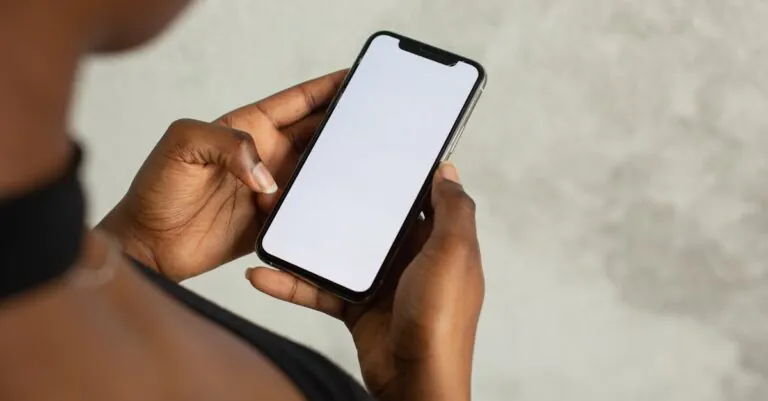In a world where smartphones are practically an extension of our bodies, why not let them keep our vital health info too? Enter the medical ID feature, the unsung hero of emergency preparedness. Picture this: you’re enjoying a hike, and suddenly you trip over a rock—classic! As you lay there contemplating life choices, your phone swoops in to save the day. With just a quick glance, first responders can access your medical history, allergies, and emergency contacts. Talk about a wingman!
This handy tool isn’t just for the tech-savvy; it’s for anyone who values their health and safety. Whether you’re a weekend warrior or a couch potato, having a medical ID on your smartphone could be the difference between a minor hiccup and a major disaster. So why not let your phone do the heavy lifting while you focus on living your best life?
Table of Contents
ToggleOverview of Medical ID on Smartphones
Medical ID on smartphones serves as a vital tool that enhances emergency preparedness. This feature allows individuals to store critical health information in a secure manner. Examples of stored data include allergies, medical conditions, medications, and emergency contacts. First responders can access this information quickly, improving response times in critical situations.
Many smartphone platforms, such as iOS and Android, provide built-in medical ID functionalities. On iOS devices, users can set up their medical ID through the Health app. Android devices typically offer similar features through various health apps or settings. Ensuring this information is up to date may save lives during emergencies.
Accessibility of medical IDs is key. Lock screens may display vital health data, allowing first responders to view necessary information without needing to unlock the device. This makes it easier for emergency personnel to provide appropriate care. Knowing that this feature is available offers peace of mind.
Individuals of all ages benefit from having a medical ID on their smartphones. Particularly for those with chronic conditions, having this information readily available can be crucial. Families with children should consider setting up medical IDs to ensure essential health details are accessible.
Encouraging widespread use of medical ID features contributes to community safety. Incorporating this technology into daily health monitoring fosters prevention and readiness. When utilized effectively, a medical ID can significantly impact outcomes during medical emergencies.
Benefits of Using Medical ID

Medical IDs on smartphones provide essential benefits in emergencies. These features promote safety and ensure vital health information is readily available.
Emergency Accessibility
Emergency accessibility enhances the efficiency of first responders. Medical IDs display crucial information on a locked screen without unlocking the device. This functionality allows paramedics to quickly know allergies, medical conditions, and prescribed medications. For instance, immediate access to a user’s medical history can expedite treatments. Many devices come with this feature enabled, making it easy and practical for anyone to utilize. Especially in critical situations, prompt information can significantly affect outcomes, making this tool invaluable for enhancing emergency response.
Health Information Management
Health information management becomes simpler with a smartphone’s medical ID. Users can securely store data like conditions, allergies, and medications in one place. Updating this information regularly ensures accuracy for anyone accessing the ID. Many smartphones allow users to include emergency contacts, enhancing coordination in emergencies. Storing health data digitally reduces the burden of remembering every detail. Individuals with chronic illnesses or families with young children greatly benefit from organized health information. Patients can share this data quickly during medical visits, fostering informed decision-making in healthcare.
Features of Medical ID on Smartphones
Medical ID on smartphones offers essential features that enhance emergency preparedness and health management.
Customization Options
Users can personalize their medical IDs to suit their specific health needs. They can input critical details like medical conditions and allergies. Additionally, custom labels for medications can be added to improve clarity. Updating information is straightforward, ensuring that data reflects the current health status. Emergency contacts can also be tailored to reach trusted individuals without delay. Such flexibility allows each user to create a medical ID that meets personal requirements.
Integration with Health Apps
Integration with health apps enhances the functionality of medical IDs. Users can sync their medical ID data with various health applications for easy access and management. This connection supports tracking health metrics, prescriptions, and appointment reminders. Moreover, health app developers often include features that alert users about health trends. By consolidating health information, users simplify their health management, enabling proactive care strategies and enhancing overall wellness.
How to Set Up Medical ID
Setting up a medical ID on smartphones ensures critical health information is accessible in emergencies. Users can easily input their medical data by following straightforward steps.
Step-by-Step Guide for iOS
- Open the Health app on the iPhone.
- Tap on your profile picture located in the upper right corner.
- Select Medical ID from the profile menu.
- Enable Show When Locked to allow first responders access without unlocking the phone.
- Enter personal information, including allergies, medical conditions, and medications.
- Add emergency contacts for quick communication.
- Finally, tap Done to save the settings.
Step-by-Step Guide for Android
- Open the Settings app on the Android device.
- Scroll and select About Phone or About Device.
- Choose Emergency Information to access the medical settings.
- Enable Emergency Information feature if it isn’t already active.
- Fill in relevant details such as health conditions, allergies, and medications.
- Add emergency contacts for quick access in critical situations.
- Save the changes to ensure the information is stored.
By completing these steps, individuals can enhance their preparedness for emergencies using their smartphones.
Embracing the medical ID feature on smartphones is a proactive step toward personal safety and emergency preparedness. By securely storing vital health information individuals can ensure first responders have immediate access to crucial data during emergencies. This simple yet effective tool is invaluable for everyone from families with young children to those managing chronic conditions.
Regularly updating this information and customizing medical IDs further enhances their effectiveness. With smartphones becoming an integral part of daily life integrating health management into these devices is a smart choice. It’s time to take advantage of this technology and prioritize health and safety in every aspect of life.



